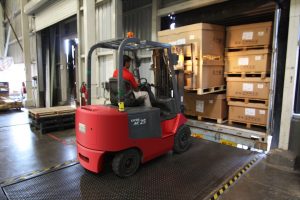
Metal is one of the most resilient materials on the planet and it has many different types and varieties. It is therefore important to know what type of machinery to use when cutting different metals as this can differ hugely depending on the type of metal, the purpose and the level of precision needed.
Hand tools
For smaller projects, it may be more appropriate to use hand tools for metal cutting. These hand tools can include hacksaws, chisels and hand shears, all of which can be used to shape and trim more pliable metals. Hand tools are typically more favoured when handling smaller amounts of metal that are easily shaped, such as certain types of copper and tin. Hand tools such as chisels can be heated or cooled to create an even more precise shape from the metal.
However, it may not be a good idea to use hand tools when attempting to cut any sort of metal into extremely small shapes as the tools will likely cause the metal to break and snap rather than be trimmed down into the desired shape.
Machinery
For projects that require a more precise cut, it may be wise to use one of several different metal cutting machines. One of the main advantages of using machines to cut metal is that a wider variety of metals can be shaped, including less malleable and thick metals such as steel.
There are several different machines available to cut metal, depending on the desired finish of the metal, as well as the properties of the particular metal being used.
Lathe – A lathe is a traditional woodworking tool that can also be used to shape metal. The lathe spins the metal at a high speed, allowing a sharpened cutting tool, such as a chisel, to be manually applied. This is one of the most common methods of cutting and shaping metals in the machining industry as it results in a high degree of precision.
Grinder – A grinding machine uses a rotating wheel or blade to cause friction which wears down the surface of the metal, resulting in a flat, smooth finish. This is much like sanding down a piece of wood but at much higher speeds. A grinder is best used when a smooth, shiny finish is required.
Water jet – Water shot out of a jet at extremely high pressures can be used to cut through metal, wearing down the surface through sheer force. For thicker metals, the water can be mixed with an abrasive compound to cut through. This method is extremely useful when shaping metals that are sensitive to heat which other machines can create as a by-product, as the water jet will not affect temperature.
Flame and Plasma – Similar to water jets, this method is achieved by pumping a flammable gas through a jet which is then directed at the metal, causing the area to melt. Both flame and plasma are used to cut metals with very high heat resistance. Plasma in particular has a very high temperature, meaning a much greater degree of precision can be achieved.
Laser cutters
Laser cutters are one of the latest methods to arrive in the machining and metal cutting industry, one that is becoming extremely popular. A laser is an extremely focused beam of light that concentrates an extreme amount of energy in a very small area. This results in the metal the laser is directed at melting, forming a small hole all the way through.
However, laser cutting can be an expensive method and different materials require different strengths of laser. Paper, for instance, only requires a 40-w laser, while thick steel may require a 500-w laser. It is worth bearing in mind that the more energy required to run the laser, the more expensive the process will be.
There are many different methods available for metal cutting, but these differ depending on the type of metal being cut and the intended use of the metal. It is always best to do the proper research before deciding on exactly which method you will be using.



